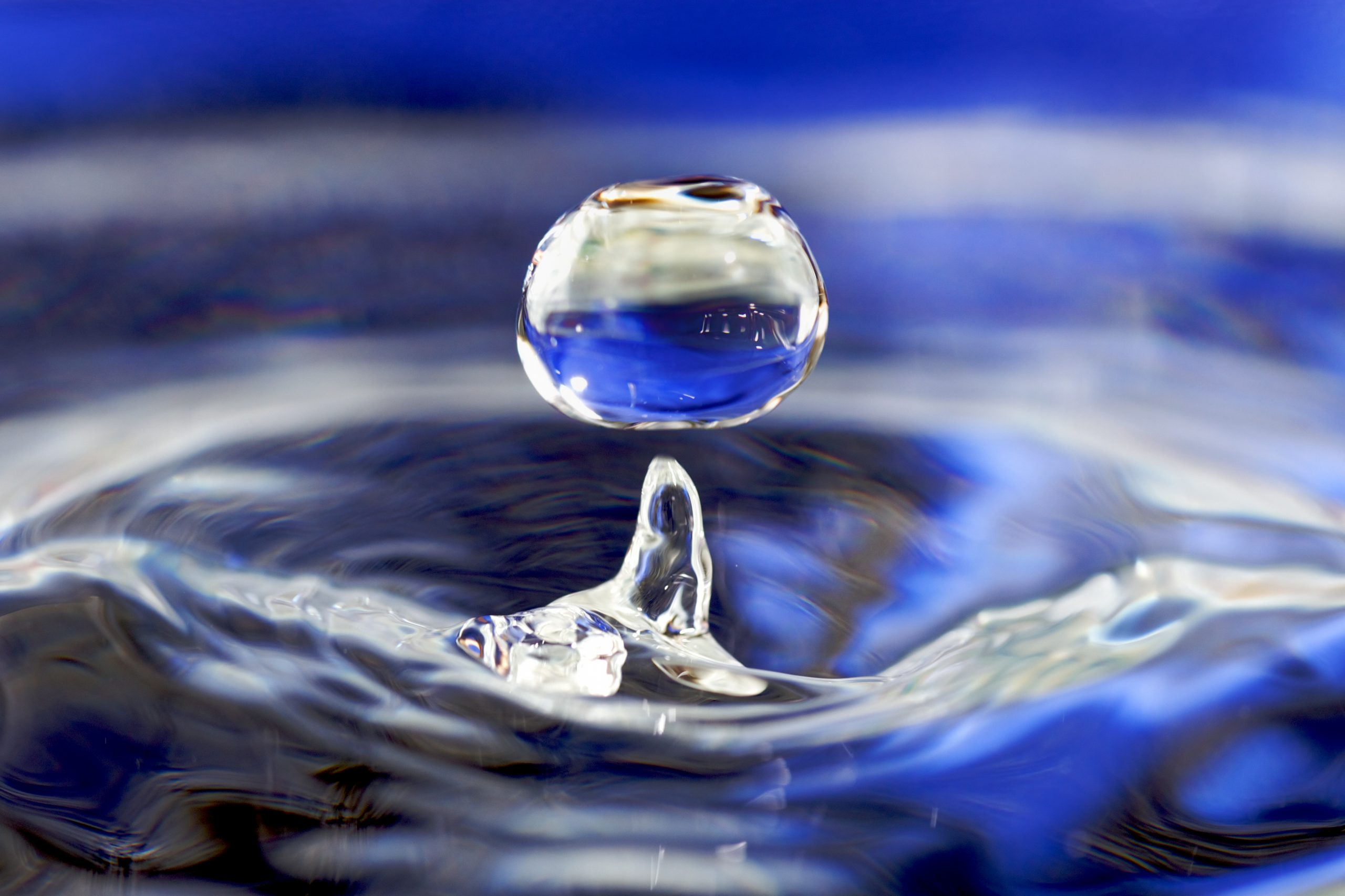
Despite a common belief, very little is known about the structure of water and interfacial interactions. Interfacial water that is adsorbed on the surface of the hydrophilic materials is formed by both water-surface and water-water interactions. It has been discovered that the interfacial water differs from the water in bulk and can exclude solutes and microspheres, and hence it is termed an exclusion zone (EZ). EZ water is known to have a higher refractive index, viscosity, and light adsorption at 270 nm. Charge separation is also caused by water-surface interactions. For example, the water EZ near Nafion™ membranes has an electrical potential of −200 mV.
Studies showed that electromagnetic energy can affect interfacial water. Infrared (IR) energy can cause expansion of the size of the EZ leading to charge separation. This study was conducted by researchers of the University of Washington with IR light of varying intensities and wavelengths to see if they can accelerate the process and bring protons into bulk water. The scientists attempted to shed light on the complex nature of aqueous interfaces.
Experimental analysis
Materials used:
Deionized (DI) water with the resistivity of 18.2 MΩ × cm was purified with a Barnstead D3750 Nanopure Diamond water system. Other materials were a Nafion™ N117 membrane, a potassium phosphate buffer, a pH dye and carboxylate microspheres (1 µm diameter in a 2.5% suspension)
Sample preparation:
Carboxylate microsphere suspensions with a microsphere-to-water volume ratio of 1:300 and pH-sensitive dye with the dye-to-water volume ratio of 1:20 for better visualization were added.
Due to carbon dioxide absorption the water had a slightly acidic pH of 6.35 and was neutralized. To stabilize the pH, a 1 molar potassium phosphate buffer of pH 7.0 made from equal volumes of 1 molar K2HPO4 and KH2PO4 solutions and added at a final concentration of 1 mM.
A Nafion™ membrane of 3 × 20 mm size was pre-soaked in 1 liter of DI water for 24 hours before use.
Control and irradiation experiments:
A thick plastic block chamber was injected with the 1 mL water the containing buffer solution, pH dye, and microspheres. The chamber consisted of a glass slide and a groove in the central vertical plane of the chamber was used to hold the Nafion™ membrane. This setup was placed on the stage of an inverted microscope for observation over 10 min.
For irradiation experiments, mid-infrared (MIR) LED wavelengths at 3.0 μm, and three near-infrared (NIR) LEDs of different wavelengths were used. It was placed 2 mm above the water level in the chamber. The light was kept as continuous as possible with constant emission power. It shone for 5 mins onto the water surface. The temperature of the water samples was obtained using infrared cameras.
Results
Water zones differ from bulk water
Interfacial water excluded dye and microspheres by forming EZ water next to Nafion™. A red zone with of pH 4 was formed beyond the EZ water called proton zone (PZ). The researchers concluded that the protons accumulated there due to growing interfacial water. With the time of contact between Nafion™ and water progressing, the EZ size was doubled as did the PZ. The microspheres drifted away from Nafion™ with time.
Stability of EZ size and PZ size
It was evident from the observation that EZ water was not caused by the substance flowing out of Nafion™. It is believed that the ice-like structure of interfacial water cause EZ and PZ water. This network of hexagonal structure, several hundred microns. Electrostatic attractions exist between the EZ water layers.
Effect of IR radiation on EZ water and PZ water
The proton concentration in PZ water increased with IR intensity along with the size of EZ and PZ. Higher IR intensities weaken the OH bonds aiding those molecules to participate in EZ expansion. IR radiation also caused thermodiffusion with carboxylate microspheres moving away from the IR light spot with increasing intensity.
Effect of NIR on EZ and PZ waters
The study of the effect of NIR on interfacial water can help to better understand light therapy. Red wavelengths and NIR wavelengths are considered suitable due to their ability to deeply penetrate tissue. Light therapy aids in the synthesis of adenosine tri-phosphate (ATP), the universal biological energy currency. This could have medical benefits. Interfacial water could act as a photoreceptor in light therapy, as cells contain macromolecules and organelles. The use of NIR to establish a proton gradient requires further investigation.
Conclusions
The research showed that the EZ and PZ zones in interfacial water stabilize after five minutes and that infrared radiation can considerably increase the size of these zones with intensity. This is possibly due to the special nature of water present on hydrophilic material surfaces.
It is also evident that IR radiation can help in building up microsphere-free zones − a phenomenon that in turn creates proton-rich zones. This is also responsible for charge separation in interfacial water. In summary, some of the mysteries regarding the complexity of interfacial water, EZ, and PZ water zones have been clarified but much remains to be studied.
Outlook
As always, further research to understand the nature of EZ and PZ of water is required. For example the viability and the possibility of the use of NIR for light therapy using interfacial water as a photoreceptor should to be studied. This applications has the potential to make a positive impact on medical applications.
References: https://doi.org/10.1016/j.colcom.2021.100397 : Effect of infrared radiation on interfacial water at hydrophilic surfaces, Colloid and Interface Science Communications, Volume 42 , May 2021, 100397
Image source: Wikipedia




